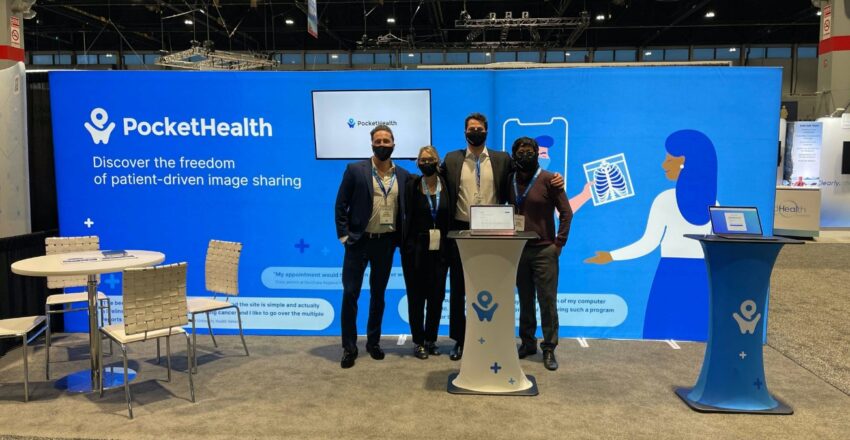Expect More From Your Enterprise Image Exchange: 5 Questions to Ask About Your Current Solution
April 23, 2024
Read More
Late last year, I had the pleasure of attending the annual meeting of the Radiological Society of North America (RSNA) for the first time. The Chicago conference, which typically attracts more than 50,000 people from over 100 countries, is the largest medical imaging forum in the world and ground zero for the big trends shaping radiology today.
RSNA is where healthcare professionals go to share their own learnings from the past year and evaluate different healthcare solutions. With the vast majority of attendees directly involved in purchasing decisions, the conference is also the perfect venue for uncovering the changing needs of healthcare organizations, physicians and patients.
This year’s theme of “Redefining Radiology” was a call to action for attendees to share perspectives about new ideas and technologies that are transforming radiology and the patient experience. In the conference’s plenary talk, James A. Brink, the Radiologist-in-Chief at Massachusetts General Hospital, stressed the need for radiology to be the driver of innovation within healthcare and this notion of radiology as a healthcare leader resonated throughout the conference.
Speakers shared stories of how they are leading best practices at their clinic or hospital through the use of technology, whether that’s engaging with patients in new, more elevated ways, improving collaboration with other specialities or streamlining efficiencies across a site. It was clear that participants felt inspired by colleagues and organizations alike to not only help redefine the road ahead for radiology but reimagine the patient experience across the entire healthcare system.
The ways in which the practice of radiology itself is transforming through technology surfaced across talks, panels and vendor demonstrations. In particular, two key trends emerged from the conference: The increasingly prominent role AI will play in radiology and how technology can be used to support a more patient-centric way of delivering care.
For years, AI has been poised to disrupt radiological practices and this year was no different. The exhibition hall included a dedicated hub for vendors to showcase new AI capabilities designed to improve efficiency and effectiveness — from populating diagnostic imaging reports, to scheduling patient appointments based on predicted exam duration, to tracking productivity and errors. Companies were careful to position how their AI-infused solutions worked in tandem with radiologists, likely in response to past backlash that AI would reduce or replace the role of the radiologist.
This idea of how technology can empower the radiologist dovetailed with a focus on how it can also support a more patient-centric way of delivering care. Patient engagement and education is particularly important for radiology, where providers may only interact with patients in short, infrequent bursts. As a result, technology has become a key enabler for providers to empower their patients by putting them at the center of their own care journey.
Patient-centricity is not a new concept in the healthcare space but, in recent years, it has become more of a buzzword that has subsequently been vacated of any real meaning. By unpacking the intent behind the term, organizations were able to move beyond the jargon and showcase actual steps they are taking to transform the patient experience. From enabling all patients to easily access their healthcare information when they need it, to preventing costly re-imaging due to lost CDs or unreliable imaging information, to allowing patients to experience care touchpoints from their home via chatbots and portals, healthcare providers demonstrated how these core concerns have been embedded within their operations to provide patients with more engaging experiences and better health outcomes.
Beyond the patient experience, I heard many accounts from those working in radiology management and IT and PACS administration that “radiologists count clicks.” They shared concerns about their growing tech stacks and adding “one more click” to radiologists’ already burdened workflows. In the past, embracing digital solutions has often added unnecessary complexity to workflows, resulting in slow implementations, clunky platforms and a lack of customer support. As a result, many providers are not just looking for replacements to current solutions but want to invest in what will bring added value over and above what they currently have.
In line with this focus on the growing tech stack, it was clear that vendors are using integrations and partnerships to expand their network reach and shore up functionality gaps. The consolidation of healthcare technology offers the opportunity to connect disparate patient and provider touchpoints but also risks a disconnected “Frankenstein” experience when not properly integrated. The goal should be providing a more seamless experience for both the patient and physician to ultimately drive better patient outcomes.
Finally, in all of the panels I attended, it became clear that both vendors and healthcare organizations feel pressure to provide return on investment and share data-driven results. It’s no longer enough to invest in technology that’s nice to have — rising costs and competition for patients have made it imperative to invest in must-have solutions with proven impact.
As providers work with vendors, it’s critical to align strategic goals and measures of success in order to demonstrate value and turn relationships into true partnerships. Through these partnerships, radiology can continue to cement its status as a healthcare leader by driving innovation across the care journey.
Allison Macleod, Head of Product Marketing